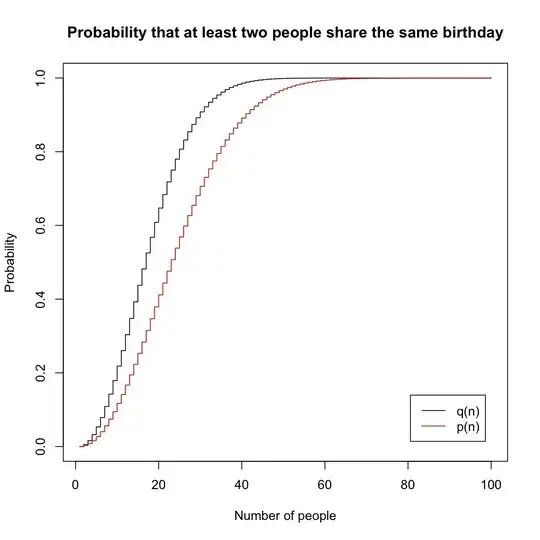Suppose that we are interested in the probability that in a set of $n$ randomly chosen people at least two people share the same birthday. We make the assumption that each day of the year (except February 29) is equally probable for a birthday. Such problem is called the birthday problem.
It seems that there are two ways to obtain this probability: $$ p(n)=1-\frac{365\cdot364\cdot\ldots\cdot(365-n+1)}{365^n} $$ and $$ q(n)=1-{365\choose n}\biggl/{365+n-1\choose n} $$ using stars and bars. When we calculate $p(n)$, the order of people is important. However, when we calculate $q(n)$, the order is not important, we can only tell how many people have a birthday on a particular day. Usually only the probability $p(n)$ is calculated.
The probability $p(n)$ is lower than the probability $q(n)$ as we see in the graph.
 Does it make sense to calculate probability $q(n)$? How can I intuitively understand why these probabilities are different (it might seem that the importance of order should not affect the final answer)? Which one is the right way to calculate the probability in the birthday problem?
Does it make sense to calculate probability $q(n)$? How can I intuitively understand why these probabilities are different (it might seem that the importance of order should not affect the final answer)? Which one is the right way to calculate the probability in the birthday problem?
Any help is much appreciated!